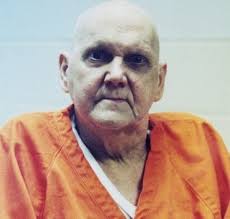The Immortal Game
8The Immortal Game is one of the most famous games in all of chess. It was played by Adolf Anderssen (1818-1879) and Lionel Kieseritzky (1806-1853) as an informal game, played at the Simpson's-in-the-Strand Divan (chess cafe, men’s club, and tavern) in London on June 21, 1851. The informal game was played during a break of the first international tournament (May 27 to July 15, 1851), London 1851.
Anderssen sacrificed his bishop, two rooks, and potentially his queen in the game. This may have been a swindle and Black may have resigned in a drawn position, at least prematurely if Black had continued with 20...Ba6 instead of 20...Na6. Black's 20th move may not have been played as Kieseritzky resigned rather than allow checkmate after 20...Na6, ensuring an immortal combination of a Queen sacrifice that leads to mate after sacrificing a Bishop and two Rooks earlier. When Kieseritzky sent his game by telegraph to a chess magazine, the game ended after White’s 20th move. But another chess magazine during that time published Black’s last move as 20…Na6, stating that “Black (sic) gave mate in three moves.” It is also possible that Kieseritzky played 20…Na6 and Anderssen announced a mate in three without actually playing the moves.
Adolf Anderssen was a math teacher from Breslau. He won the 1851 London International, held at the St. George Chess Club, defeating Kieseritzky in the first knockout round, with two wins and a draw. Anderssen was considered the strongest player of his day.
Lionel Adalbert Bagration Felix Kieseritzky was also a math teacher from Dorpat (now Tartu), Livonia (now inside of Estonia). He was also a chess tutor at the Cafe de la Régence, in Paris, where he gave chess lessons at 5 francs an hour. Two years later, Kieseritsky died penniless in the Hotel du Dieu in Paris, a charity hospital for the insane. No one attended his burial in a pauper's grave.
The opening was a King's Gambit Accepted (1.e4 e5 2.f4 exf4), Bishop's variation (3.Bc4), Bryan Counter Gambit (3…b5).
When the game was over, Kieseritsky was so impressed with the game that he telegraphed the moves to his chess club in Paris. The game was publicized in the French chess magazine La Régence in July, 1851 (page 221, game 186). In this game, the last move was 20.Ke2. The game was also published in Chess Player, volume 1, July 1851, by Horwitz and Kling. In that game, the last move was 20…Na6, with the note “And Black gave mate in three moves.” It should have read “And White gave mate in three moves.”
The game was first called the "Immortal Game" (Eine unsterbliche Partie) by the Austrian player Ernst Falkbeer (1819-1885) in 1855 when he annotated the game in the August 1855 German chess magazine Wiener Schachzeitung, page 293. He included the move 20…Na6 as the last move and annotated several other possibilities (20…f6, 20…Bb7, and 20…Ba6) for Black’s 20th move.
On September 2, 1923 the town of Marostica, Italy played the immortal game with living persons. They have been recreating this game with living persons every year.
The final part of the game was used in the 1982 movie Blade Runner but the chessboards are not exactly arranged as in the Immortal Game. Sebastian's (Batty) board does not match Tyrell's board.
A position of the game after the 20th move has been recreated on a chess stamp from Surinam in 1984.
In 2008, David Shen wrote The Immortal Game: A History of Chess, or How 32 Carved Pieces on a Board Illuminated Our Understanding of War, Art, Sceicne and the Human Brain,. I contributed to a few articles in the book.
Adolf Anderssen – Lionel Kieseritsky, London, June 21, 18511.e4 e5 2.f4 exf4 3.Bc4 Qh4+ 4.Kf1 b5 5.Bxb5 Nf6 6.Nf3 Qh6 7.d3 Nh5 8.Nh4 Qg5 9.Nf5 c6 10.g4 Nf6 11.Rg1 cxb5 12.h4 Qg6 13.h5 Qg5 14.Qf3 Ng8 15.Bxf4 Qf6 16.Nc3 Bc5 17.Nd5 Qxb2 18.Bd6 Bxg1? [18…Qxa1+] 19. e5 Qxa1+ 20. Ke2 Na6 21.Nxg7+ Kd8 22.Qf6+ Nxf6 23.Be7# 1-0





Comments
Post a Comment